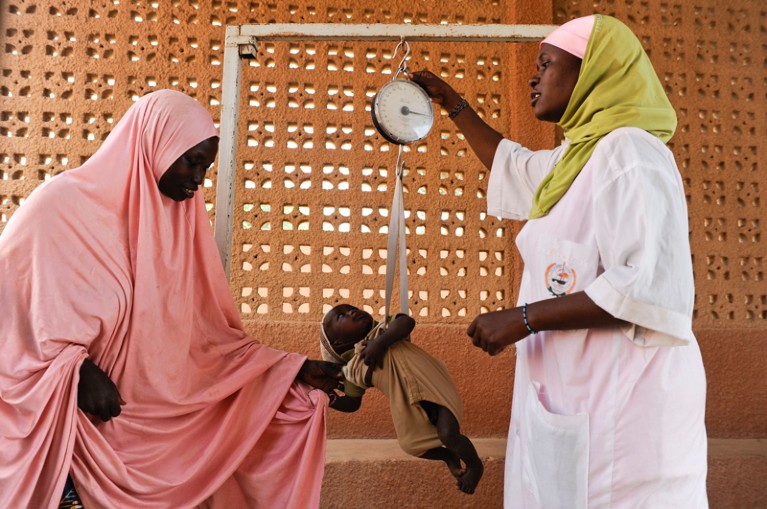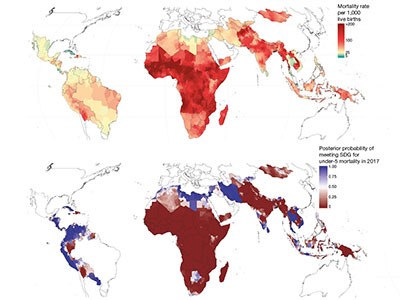
Census data will help to save the lives of under-5s in low- and middle-income countries.Credit: Joerg Boethling/Alamy
Every child death is a tragedy. That’s why a huge survey published this week on global child mortality is both striking and important. The work, by a collaborative team of some 4,000 people, is a detailed study of the variation in mortality rates among under-fives across 99 low- and middle-income countries between 2000 and 2017 (R. Burstein et al. Nature 574, 353–358; 2019). It is one of the largest studies of its kind.
The work, led by Simon Hay at the University of Washington in Seattle and funded by the Bill & Melinda Gates Foundation, was carried out to help countries identify districts where under-fives are at greater risk of premature death.
Read the paper: Mapping 123 million neonatal, infant and child deaths between 2000 and 2017
Overall, deaths among under-fives have fallen from 19.6 million in 1950 to 5.4 million in 2017, thanks to steady gains in socio-economic development and public health. Today, the overwhelming majority of under-fives mortality is in low- and middle-income countries, which is why the researchers chose these countries to dig deeper.
The study is particularly valuable for its detail: it allows health-policy officials, researchers and non-governmental organizations to see district-level data. So although, at a national level, some countries — such as Colombia and Panama — have achieved the United Nations target of reducing infant mortality to fewer than 25 deaths per 1,000 live births by 2030, there are individual regions that are yet to reach the goal. Hay and his colleagues’ work will help to identify these left-behind populations that, he says, “we need to pay more attention to” — with extra efforts to tackle poverty, inequality and poor health.
What is also remarkable about this piece of work is that it relied on a research method that risks going out of fashion. The team collected their information by poring over records of household surveys, including information on individual families that many countries record in a conventional census. More than 450 separate surveys provided the basis for the data, often asking the difficult questions of how many children a person has had — and how many have survived.
“We need more surveys,” Hay told Nature. Unfortunately, in many countries, censuses are being scaled back. The conventional technique of processing paper-based forms, or sending interviewers to households, has always been expensive. That is one reason why, increasingly, households are being asked to fill out census data online — and it is possible that, at some point, this, too, will end.
After all, in many countries, swathes of digital data on citizens are already being collected online — from health and education records to election registration, tax returns and more. But these data may not be as comprehensive as a full-blown census, and in less-wealthy countries the data may not be collected at all, which is why censuses are still invaluable.
Hay and colleagues’ work is a reminder that the conventional census has powerful uses. It is costly and time-consuming, but in this case it could demonstrably save lives. Governments should think harder before scaling back or abandoning censuses — and if they do, it’s vital that other funders step in.

 Read the paper: Mapping 123 million neonatal, infant and child deaths between 2000 and 2017
Read the paper: Mapping 123 million neonatal, infant and child deaths between 2000 and 2017
 Data on child deaths are a call for justice
Data on child deaths are a call for justice






